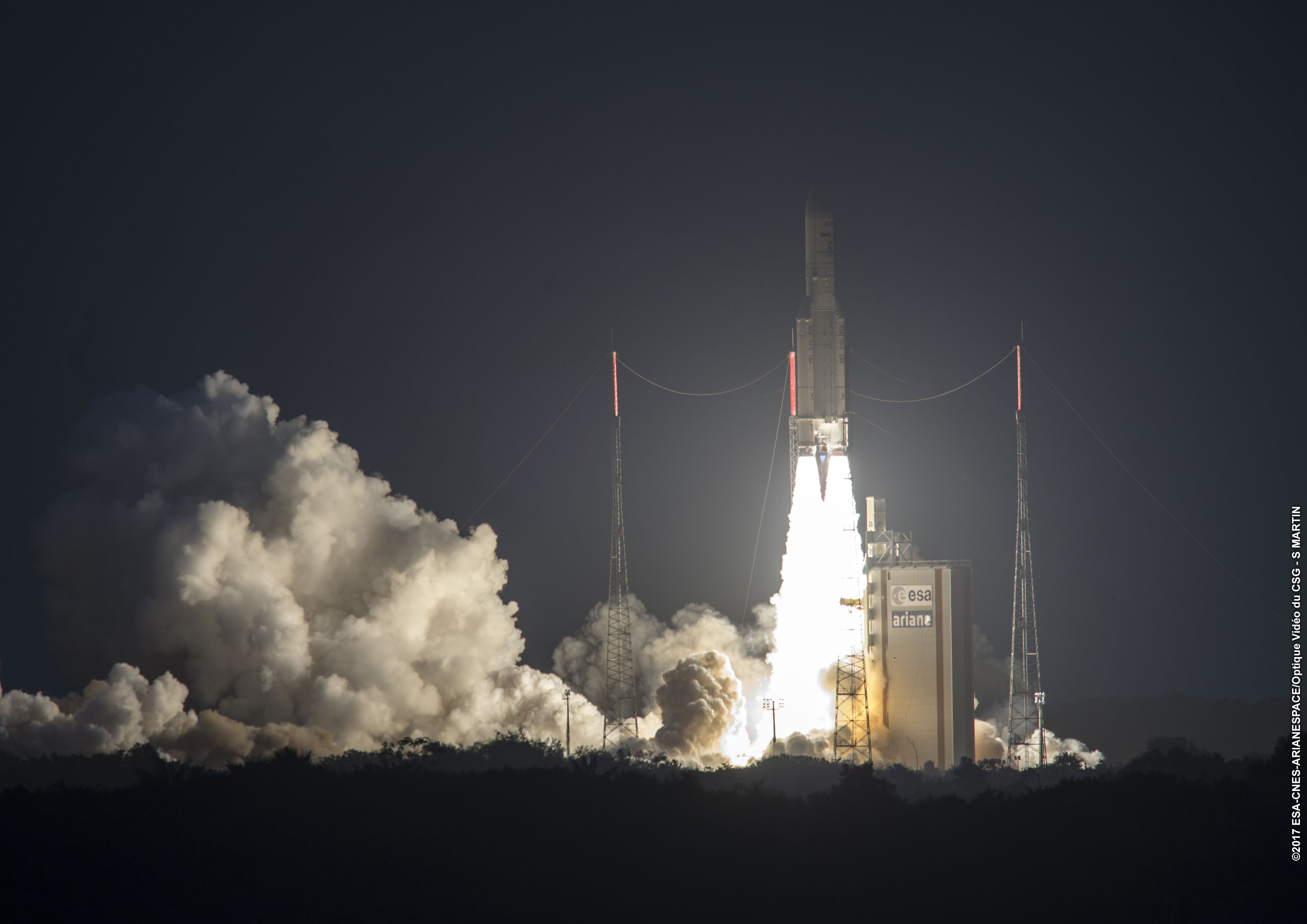Arianespace: Satellite Launch Company
Arianespace is a multinational company with headquarters in France. It was the first commercial firm to offer launch services. Its current launch vehicles are the heavy-launch Ariane 5, the medium-launch Soyuz-2, and the light-launch Vega. A new heavy launcher, Ariane 6, is under development and expected to start operations around 2020.
The company was founded in 1980 with these three goals, according to Arianespace:
- Giving independent access to space for Europeans;
- Aiming for leadership in commercial space transport;
- Offering a wide range of space-based applications, including telecommunications, science, navigation, technology demonstrations and Earth observation.
As of early 2017, the company has sent more than 550 satellites in space. Arianespace is a subsidiary of Airbus Safran Launchers, which has 74 percent of the share capital. The remaining 26 percent is held by 18 shareholders in the European launcher industry.
Companies based in France own the most shares (64.1 percent), followed by German businesses (19.85 percent). The balance is held in small quantities (3.4 percent, or less) by shareholders in Belgium, Denmark, Italy, the Netherlands, Norway, Spain, Sweden and Switzerland.
Arianespace launches missions from the Guiana Space Center in French Guiana.

History
The company was created on March 26, 1980. Its first commercial launch services contracts were signed in 1981 with U.S. company GTE Spacenet (now a subsidiary of SageNet, a telecommunications company). By 1984, Arianespace flew the first increased-lift Ariane 3, and also began its commercial space transportation line with the launch of the Spacenet-1 telecommunications satellite.
Preparatory work on the Ariane 5 launcher began in 1985, and development began in 1987. Also around that time, in 1986, France's Spot 1 Earth observation satellite was the first Arianespace mission sent to heliosynchronous orbit, meaning that the orbit has the same period as the sun's rotation.
By the end of the 1980s, the Ariane 1, 2 and 3 launchers had all flown their last missions. Arianespace was opened up to new European partners in 1990. Ariane had its 50th flight in 1992, during the joint launch of the French Telecome 2B and Inmarsat II-F4 telecommunications satellites. The first reconnaissance satellite carried by Ariane, called Helios 1A, flew in 1995.
While Ariane 5's first flight in 1996 ended in failure, a second attempt in 1997 was successful and it was qualified for commercial operations in 1998. Its last failure was in 2002, when the Vulcain 2 main cryogenic engine failed. (As of February 2017, Ariane 5 has flown 91 times with two complete failures, and has flown without a complete loss of the rocket for 15 years.)
Some major milestones in the 2000s include the last flight of Ariane 4 (2003), the launch of the Rosetta comet mission (2004), the first Automated Transfer Vehicle (ATV) launch to the International Space Station (2008) and the launch of the Herschel Space Telescope (2009).
Since 2010, Arianespace has launched spacecraft for Europe's Galileo satellite positioning system, debuted the Vega and Soyuz rockets, and completed the ATV launches to the space station. As of February 2017, Vega has flown nine times (all successfully) and Soyuz 42 times (with 41 successes.)
Additional resource
Join our Space Forums to keep talking space on the latest missions, night sky and more! And if you have a news tip, correction or comment, let us know at: community@space.com.
Get the Space.com Newsletter
Breaking space news, the latest updates on rocket launches, skywatching events and more!

Elizabeth Howell (she/her), Ph.D., was a staff writer in the spaceflight channel between 2022 and 2024 specializing in Canadian space news. She was contributing writer for Space.com for 10 years from 2012 to 2024. Elizabeth's reporting includes multiple exclusives with the White House, leading world coverage about a lost-and-found space tomato on the International Space Station, witnessing five human spaceflight launches on two continents, flying parabolic, working inside a spacesuit, and participating in a simulated Mars mission. Her latest book, "Why Am I Taller?" (ECW Press, 2022) is co-written with astronaut Dave Williams.










